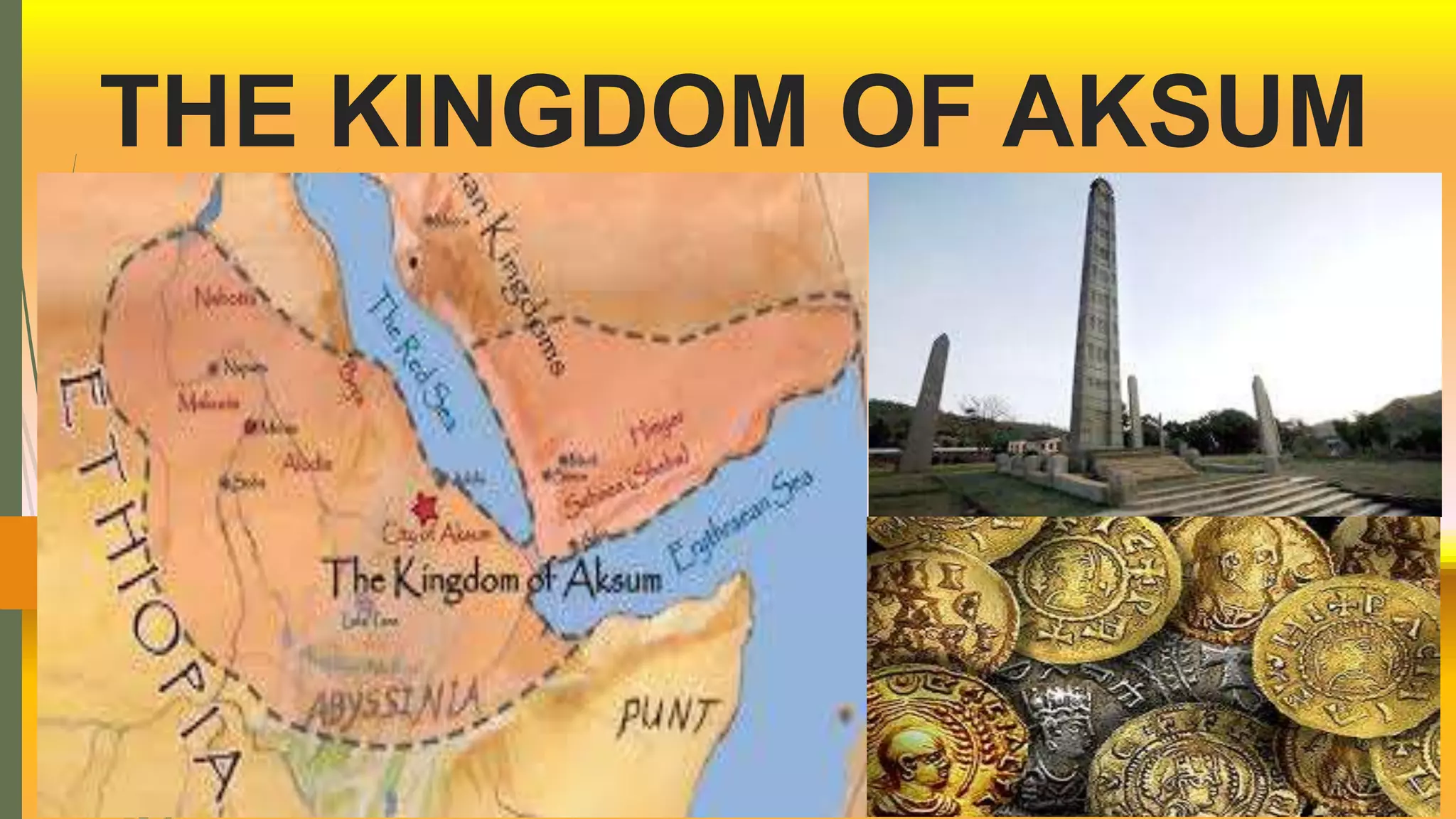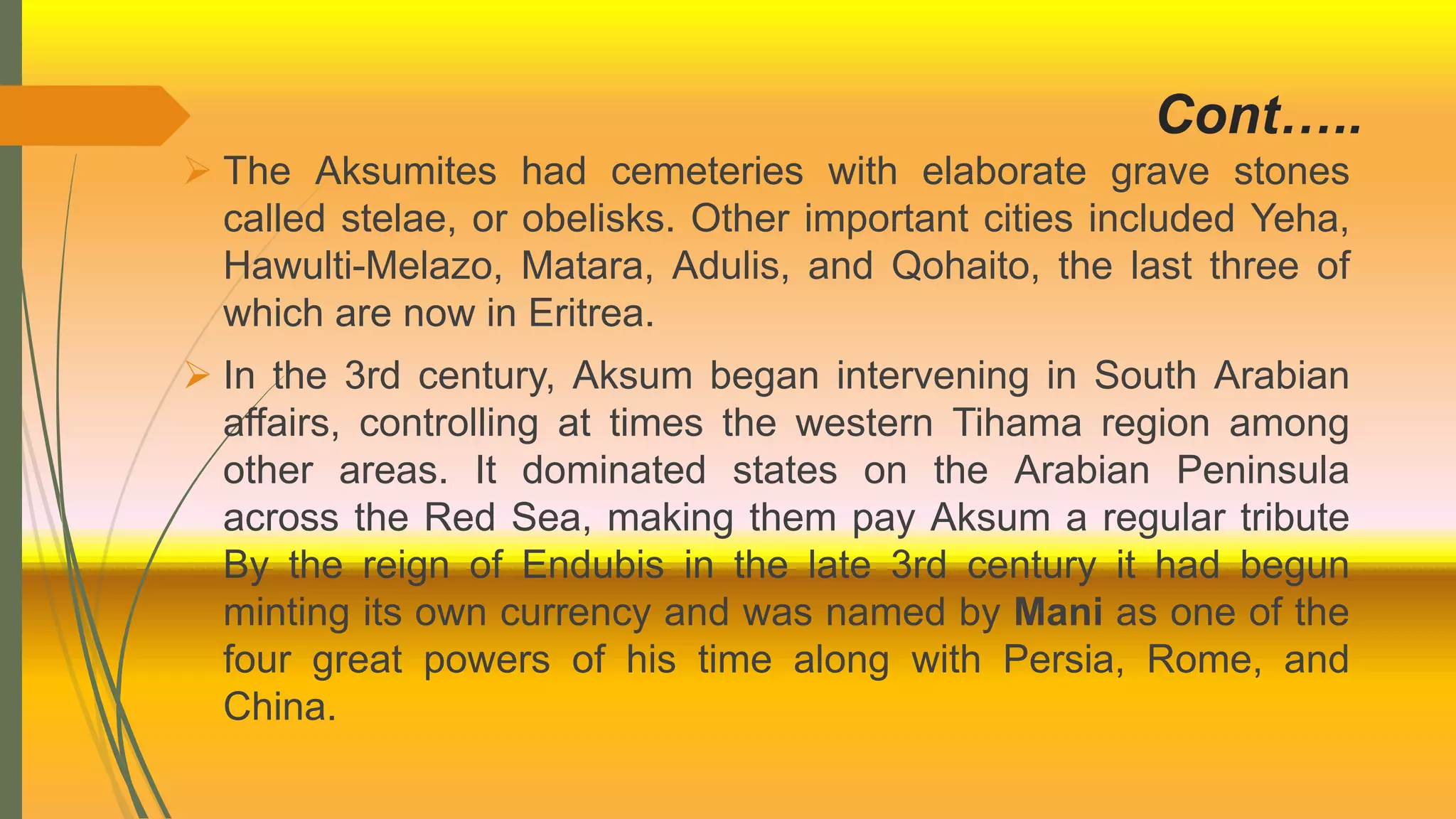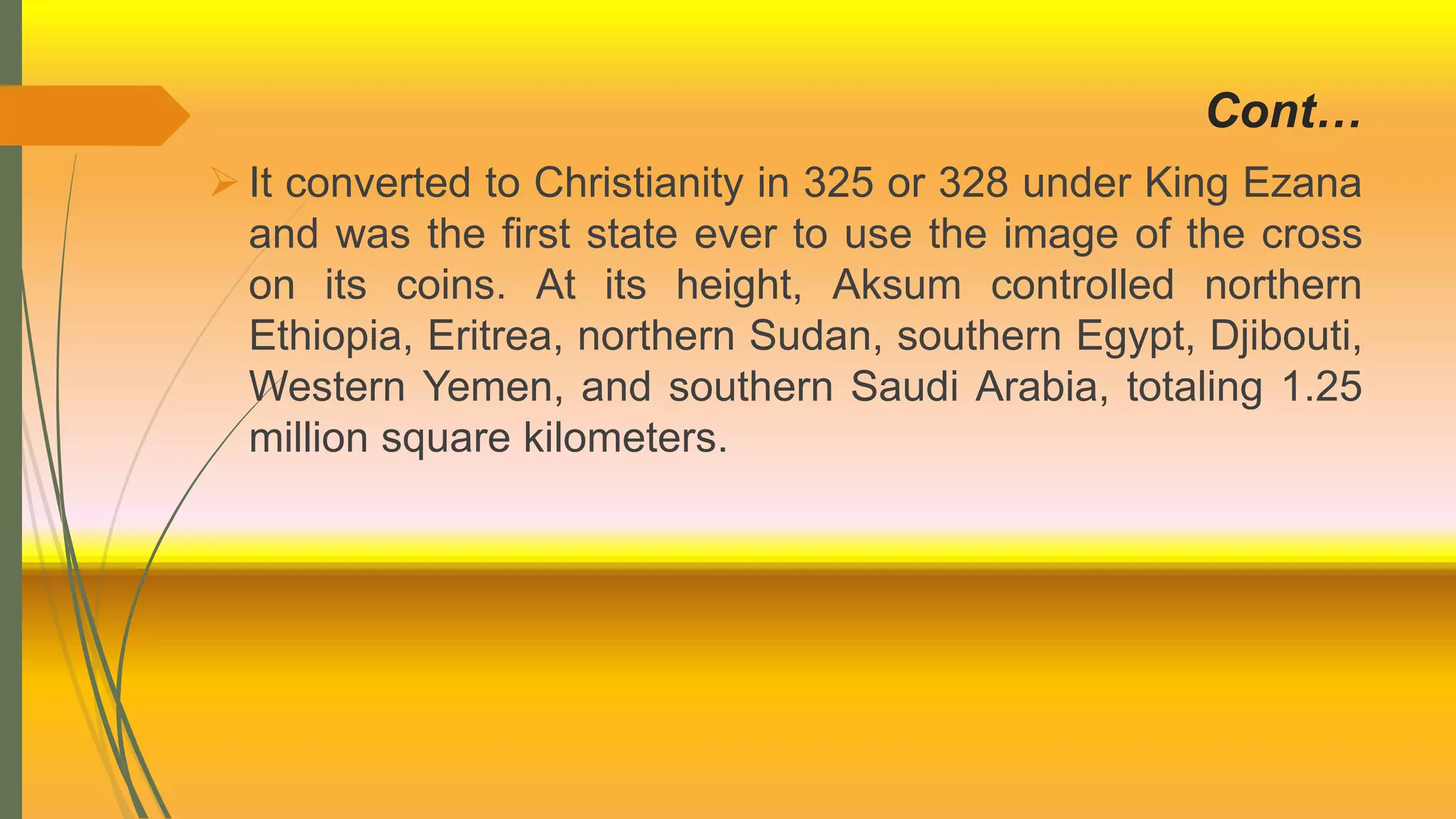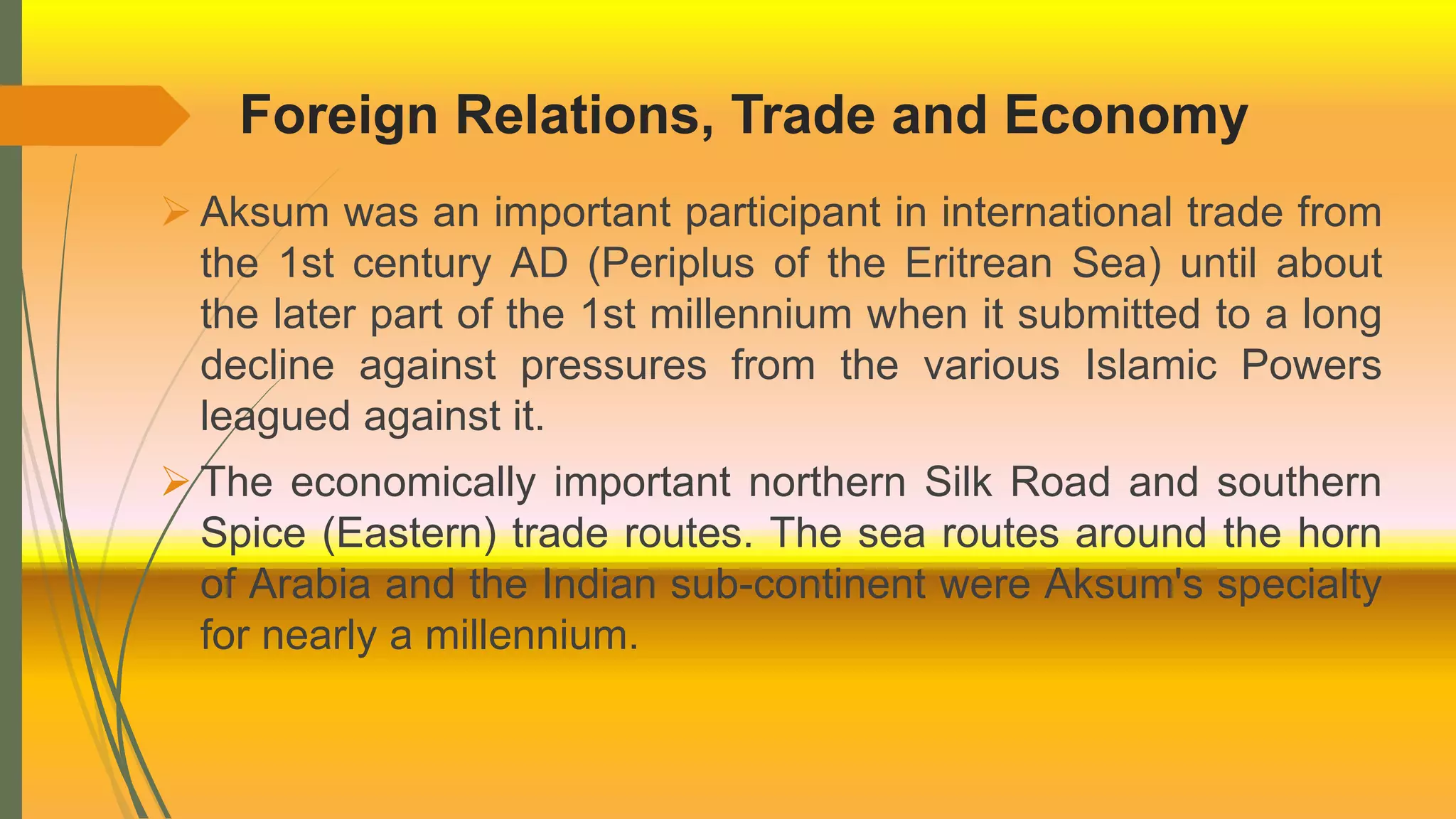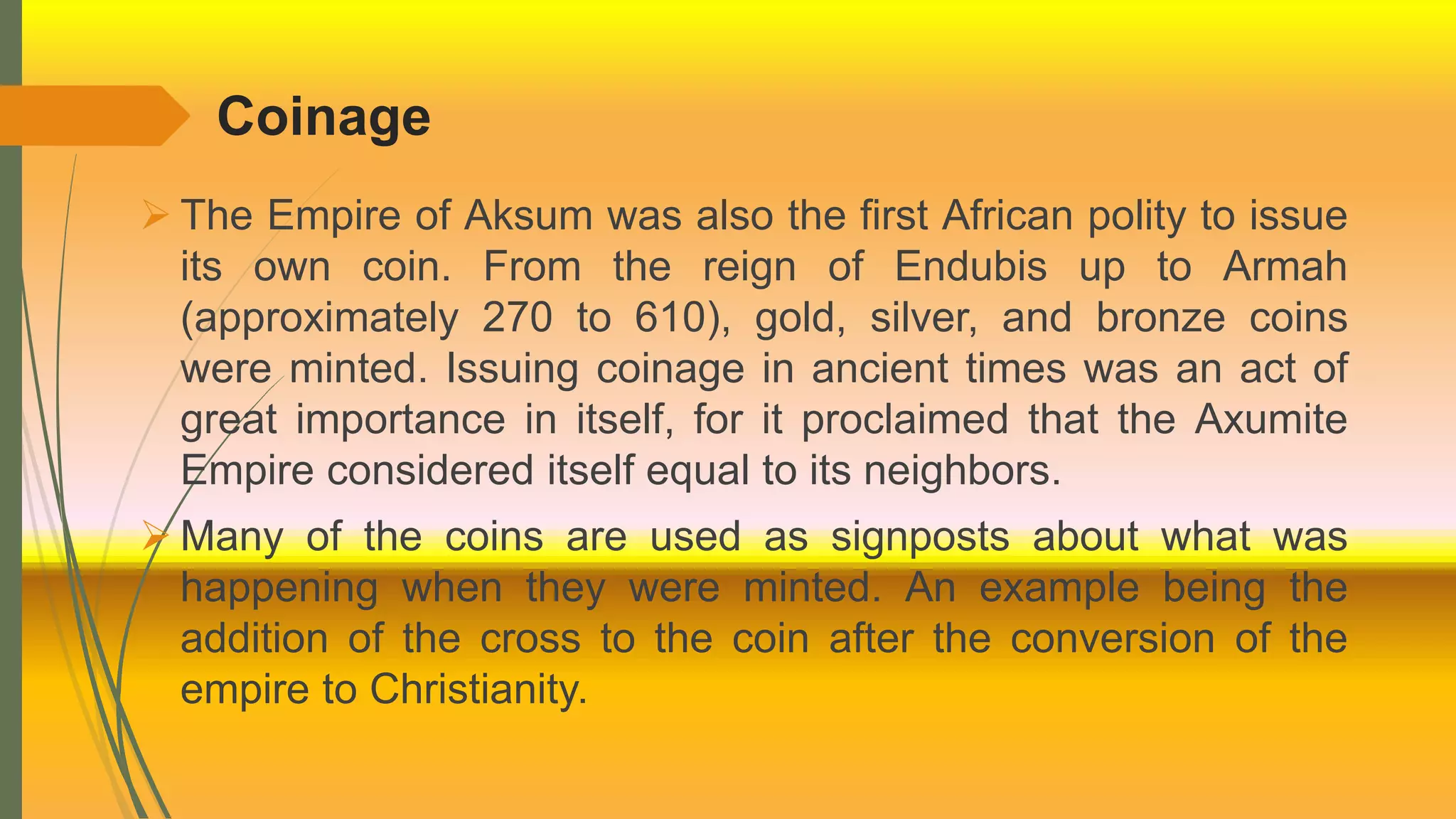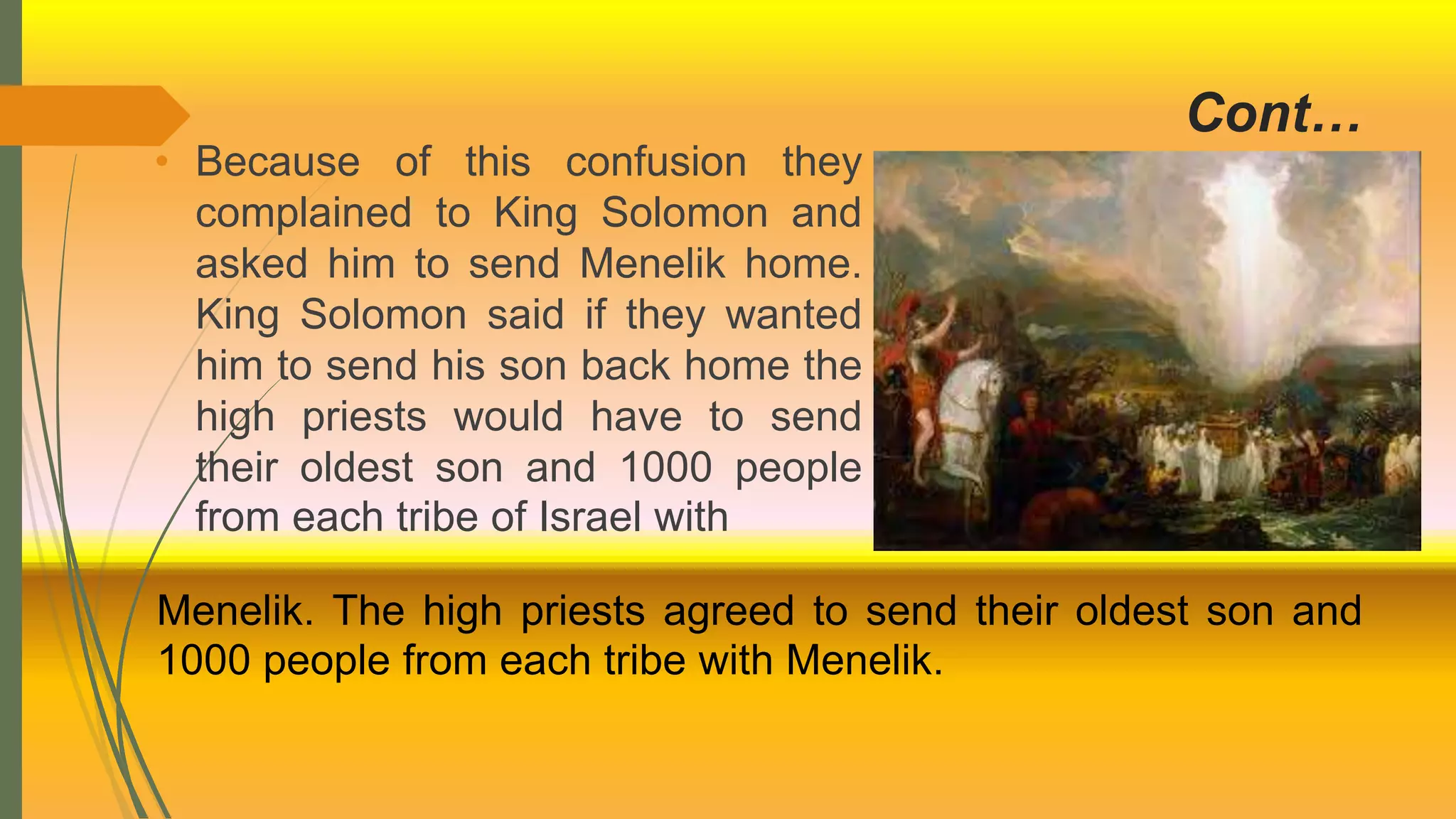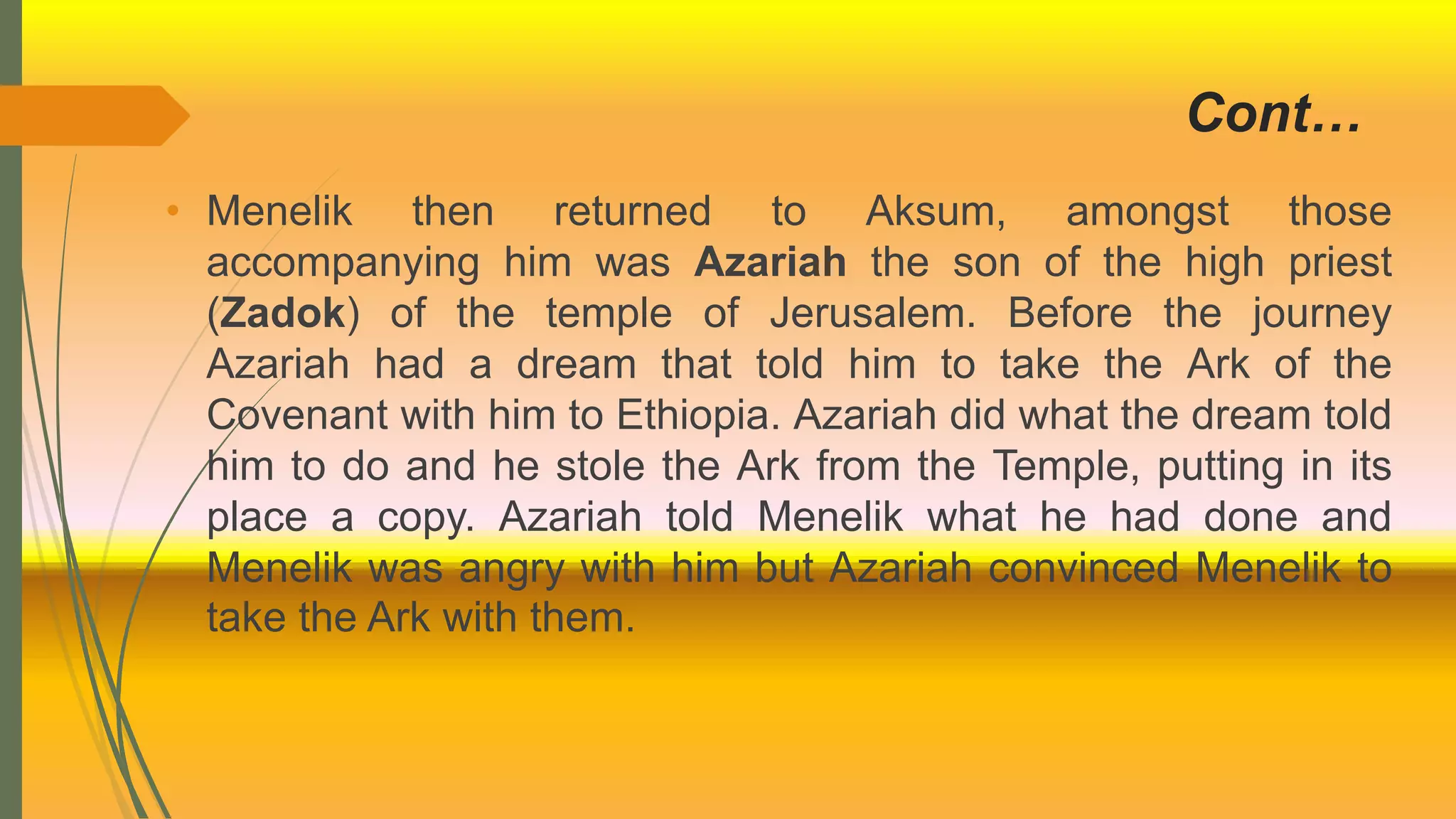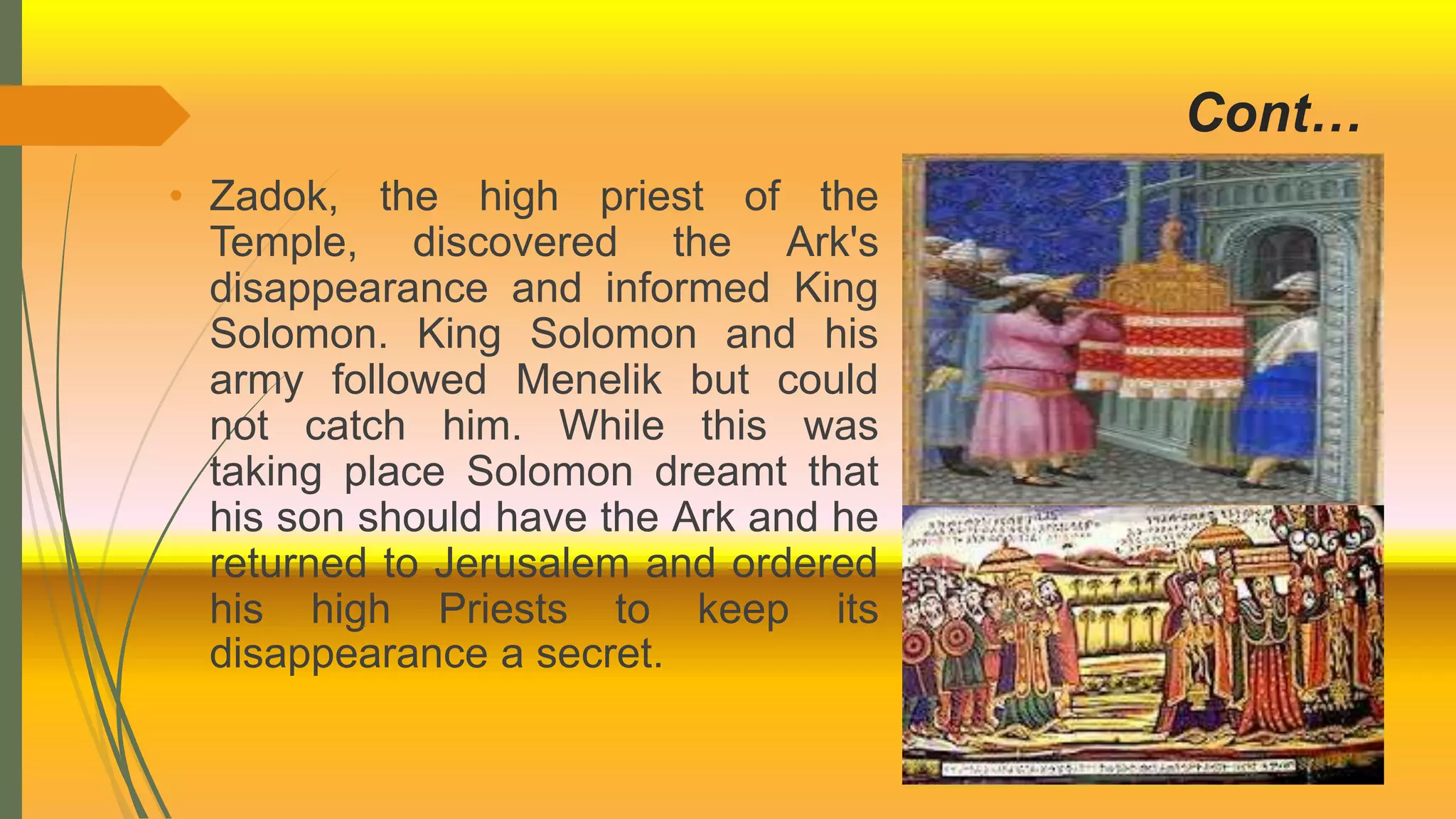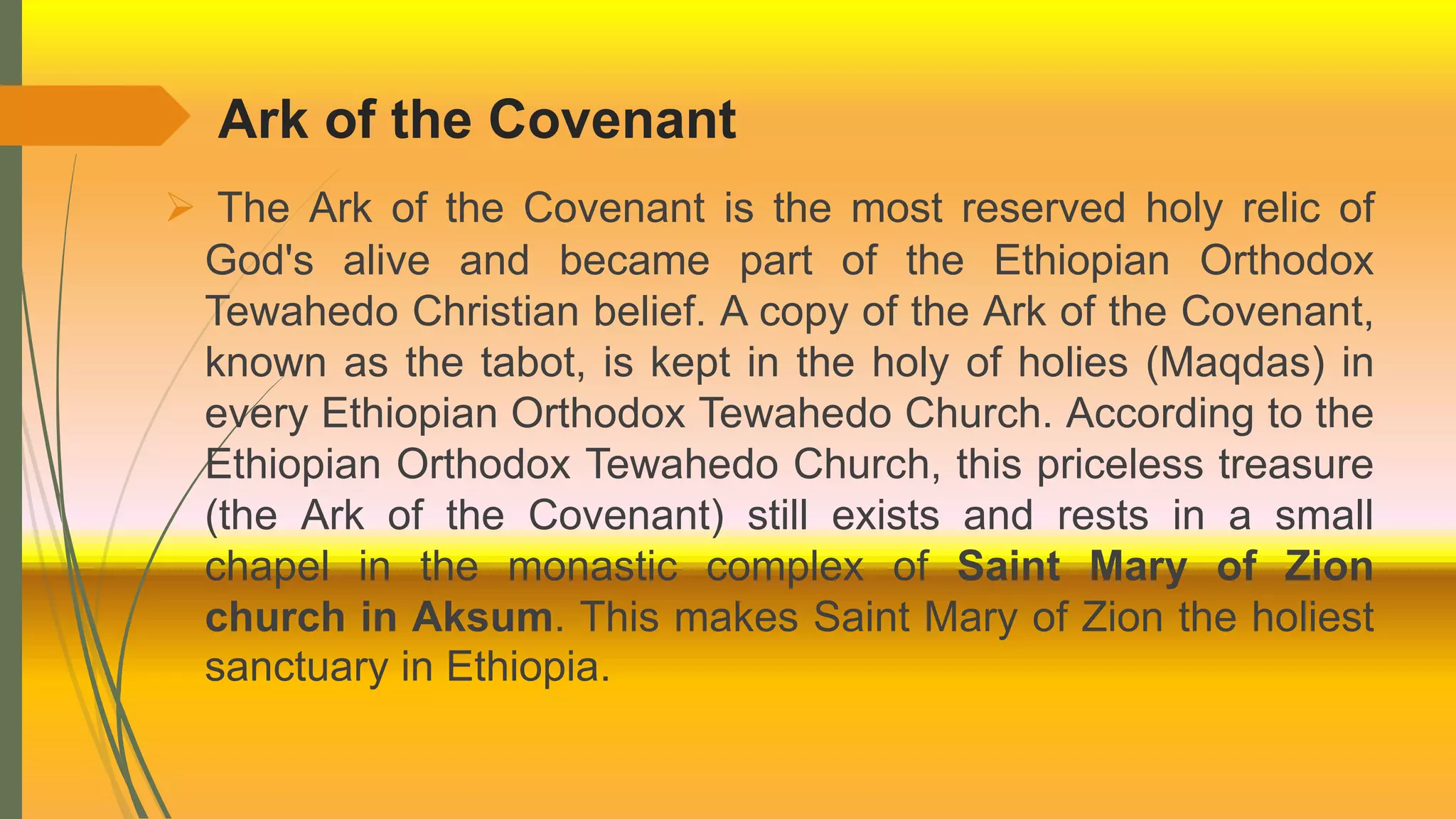The document provides an overview of the ancient Kingdom of Aksum located in what is now Eritrea and Ethiopia. It flourished between 100-940 AD and grew to become a major trading empire, facilitating trade between Rome/Byzantium and India. Aksum adopted Christianity in the 4th century and left behind significant architectural remains including large obelisks and tombs. It minted its own currency and had foreign relations across the Red Sea region and beyond. The document also discusses Aksumite society, culture, and the legend of the Queen of Sheba's visit to King Solomon which Ethiopians believe founded their Solomonic dynasty.
